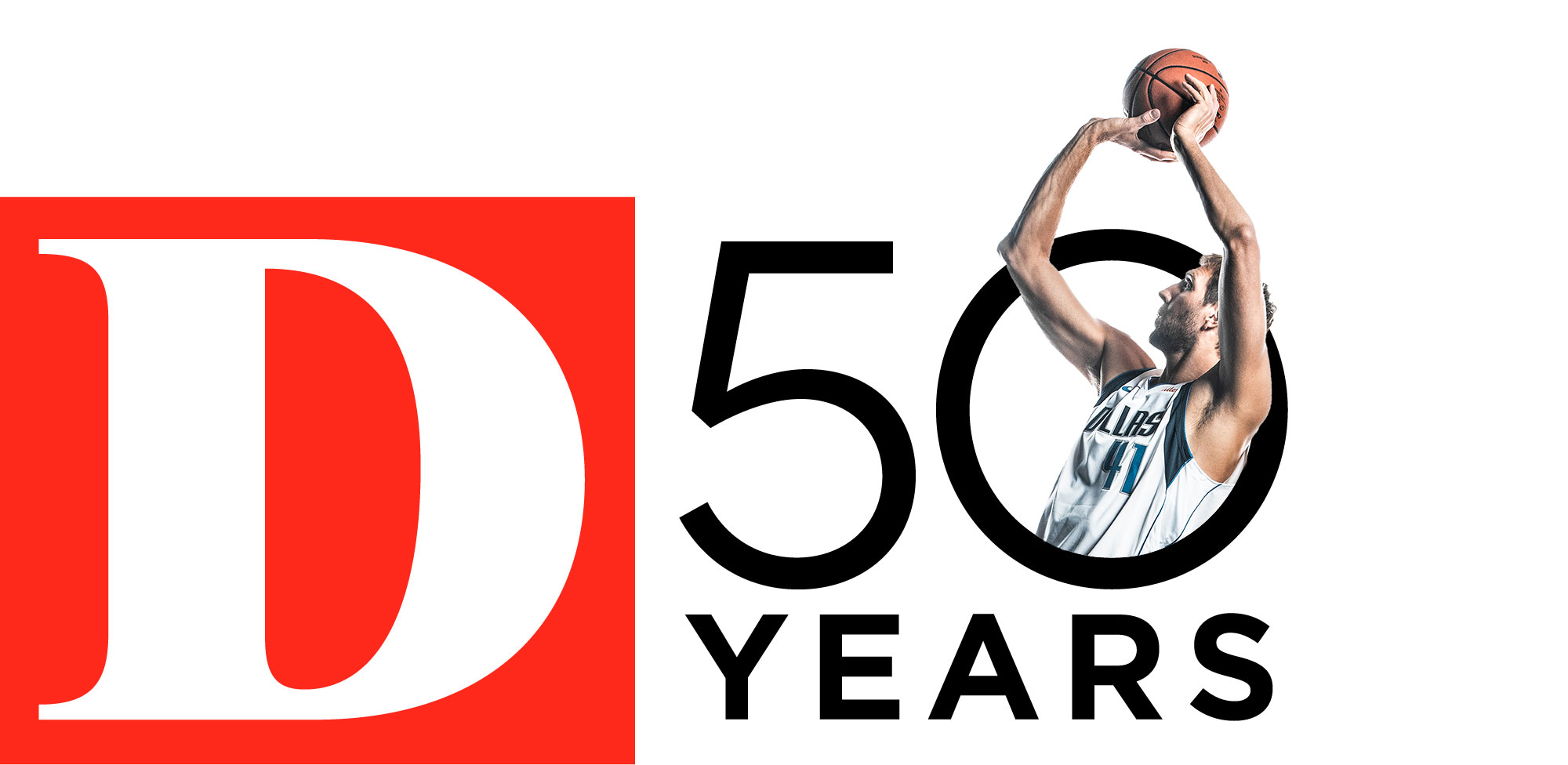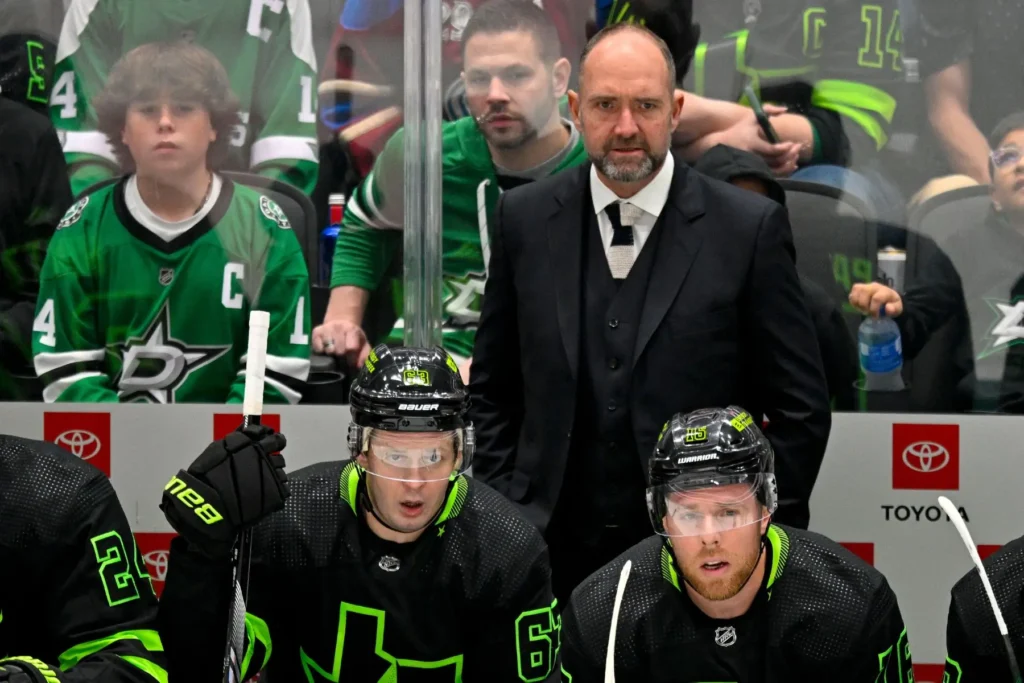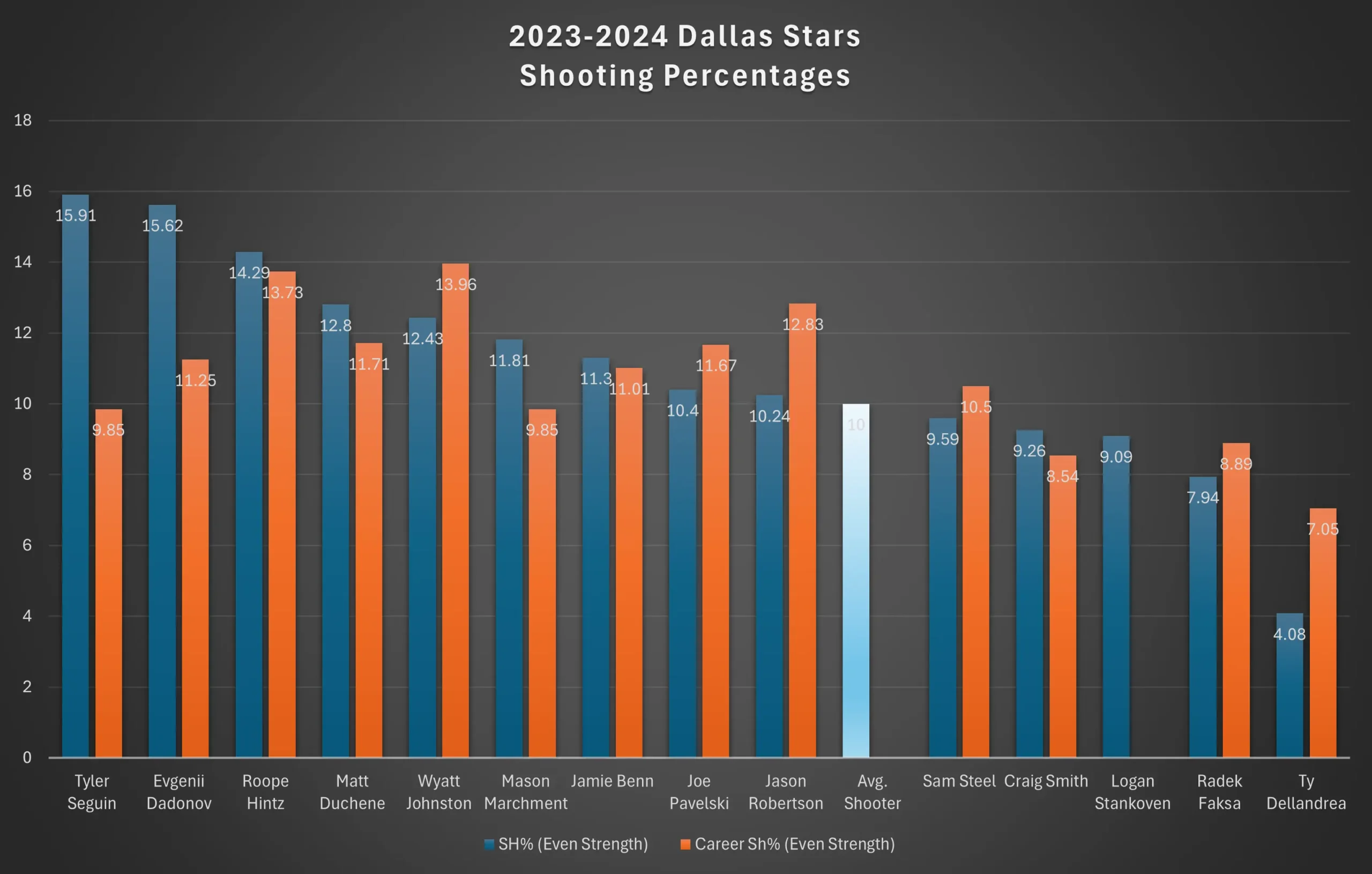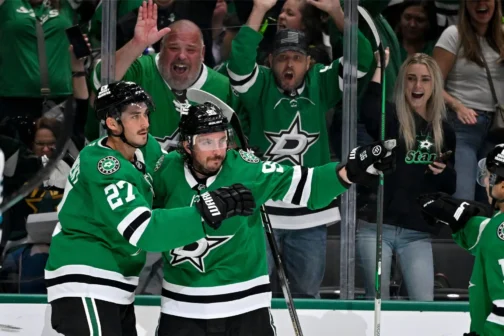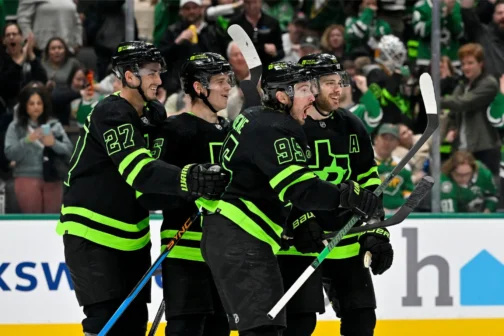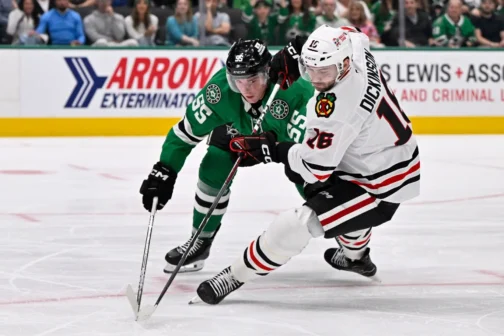We’ve talked endlessly about the Stars’ defense. For some fans, the blueline will be what holds this team back from the greatness it fell shy of versus an Edmonton team that seemed beatable—an Edmonton team with a much weaker blueline, no less. To our credit, we’ve given you the good cop, the bad cop, and the confused cop as it relates to the Stars’ defense. However, may I offer a counterpoint? Who cares: it’s the offense that will take Dallas to greater heights.
Before you tell me that “defense wins championships,” recall the defending Stanley Cup champions stitching its blueline together with also-rans and duct tape. Then ask yourself this: what failed the Stars in the playoffs? What was their most volatile element in those final six games? What was the thing that made them great for six months, only to become questionable for the last three?
That’s right, the offense, which is why it’s the thing I keep going back to after the Oilers loss. The Stars became one of only seven teams in the salary cap era to have seven or more 20-goal scorers during the regular season. When teams have that many players scoring that many goals, a good percentage of them go to the Stanley Cup Finals. Not Dallas. The Stars went from having the 12th-best shooting percentage since 2007 (all situations) to a middling shooting team in the playoffs. Critically against the Oilers, the only goal scorers supporting Wyatt Johnston and Jason Robertson were Mason Marchment, Tyler Seguin, and Jamie Benn. Across the ice, six Oilers beyond Connor McDavid and Leon Draisaitl scored at least one goal.
Whatever the Stars’ defense is capable of, it remains an x-factor. However, the offense can’t be an x-factor. It’s too good to be unreliable. There’s no reason for the third-highest scoring team (behind Colorado and Toronto) to fall flat when it matters most.
So that’s the big question. Will the offense be reliable this season? It’s also the question Pete DeBoer will have the unenviable task of getting right. He’ll need to figure out what conditions allow Benn, Seguin, and Matt Duchene to remain productive as they hit the wrong side of their peak production windows. DeBoer will need to figure out which replacement for Joe Pavelski can level up Robertson and Roope Hintz, if possible. Johnston and Logan Stankoven are establishing themselves as a couple of the game’s best young forwards. If offense is what makes Dallas a great team, then DeBoer will need to find a configuration that can’t fail.
But first it’s worth asking: should we expect Dallas to put up similar numbers despite losing Pavelski? And should we expect a better performance from the offense in the playoffs? In point of fact, yes. Below is a basic graph of each Dallas forward. The blue bars represent their shooting percentage for last season, and the orange bars represent their career shooting percentage. You’ll also find a “mystery” bar inside this graph.
If you’re not seeing the catch, it’s because there is none. The mystery bar is the average forward’s shooting percentage at even strength. Focusing on the blue bars, there’s an unmistakable trend. Every forward in the top nine—I’m including Evgenii Dadonov because that’s where he started, and he played the bulk of the season with Johnston and Benn—was an above-average shooter at even strength. However, with only a few exceptions, they’ve all been above-average 5-on-5 shooters throughout their careers.
Furthermore, there’s yet another encouraging sign here. The Stars’ two best shooters, Johnston and Robertson, fell well below their career average last season as even-strength shooters. Can we expect this to continue? With the exception of Colin Blackwell, every Stars forward, based on his expected unblocked shooting percentage, has always been an above-average shooter.
There are still plenty of questions. Will Johnston play on the top line, or will he anchor Benn and Stankoven for a full season? If he plays on the top line, will Mavrik Bourque take Johnston’s place? What kind of knock-on effect would that have on Benn and Stankoven? Will Marchment, Seguin, and Duchene, so essential to the team’s regular-season depth, get a do-over after being so invisible in the playoffs?
The data makes clear that there’s no wrong answer. Dallas has an elite forward group that will continue to perform like one. But it’s not about whether DeBoer can get an A out of his group; it’s whether he can get an A-plus. Bourque is a very good prospect, but he’s also very different, which makes his unique playmaking style a really smooth fit to replace Johnston or a somewhat rugged one. How quickly will DeBoer find the right fit for a rookie forward who has plenty of talent but no experience?
I suppose there’s a contradiction worth resolving here. If the offense is so good, then why did it lay the proverbial egg against Edmonton of all teams? There’s no good answer for that. There are, however, good explanations. The biggest is one we’ve covered: forward production is broadly consistent from the regular season into the postseason. So perhaps the Stars got unlucky, and as long as they make the playoffs, the regression gods will reward them by paying it back.
But the reason why DeBoer figures into this is because his decision-making is just as important. How much different is the power play in the postseason if he and Steve Spott take Pavelski off that top unit sooner? While I don’t agree with the cheap explanation that the Stars lost to the Oilers as soon as they flatlined a four-minute power play (on clean ice, no less) in overtime of Game 1, I do agree it was significant.
So that’s kind of the thing. Dallas has a lot of significant pieces. Johnston appears on track for a monumental season. Stankoven and Bourque rank No. 3 and No. 10, respectively, on The Athletic’s top Calder candidates. The list goes on. But one of the key ingredients remains its most subtle: how quickly DeBoer and his coaching staff can identify not just the right chemistries, but also the perfect chemistries.
A sustainable offense can’t just be an endless list of good things and great players. If it were, then the Florida Panthers wouldn’t be Cup champs. That doesn’t mean the Stars need to copy the Panthers, just as the Panthers didn’t copy the Knights, who didn’t copy the Avalanche, who didn’t copy the Lightning. But it does mean that perfecting what they already do extremely well will be what gets Dallas over the hump in the end.
Author

